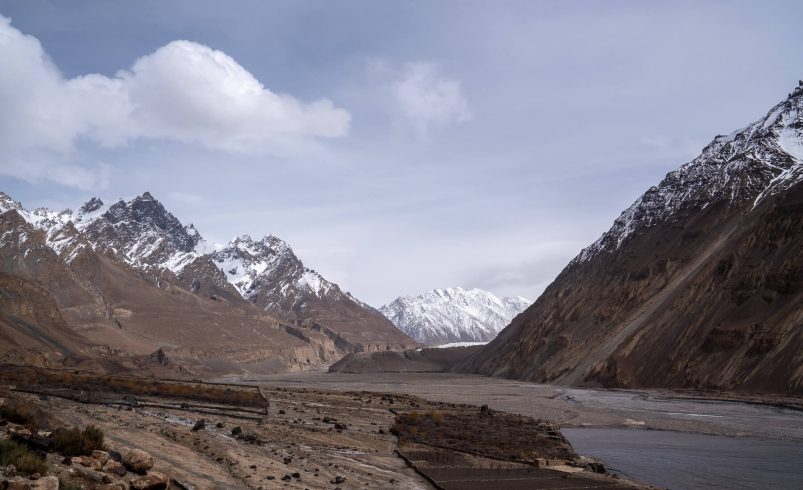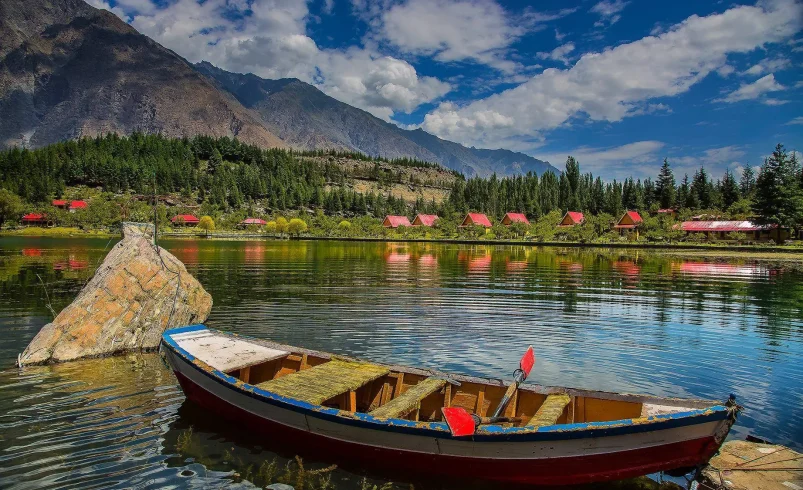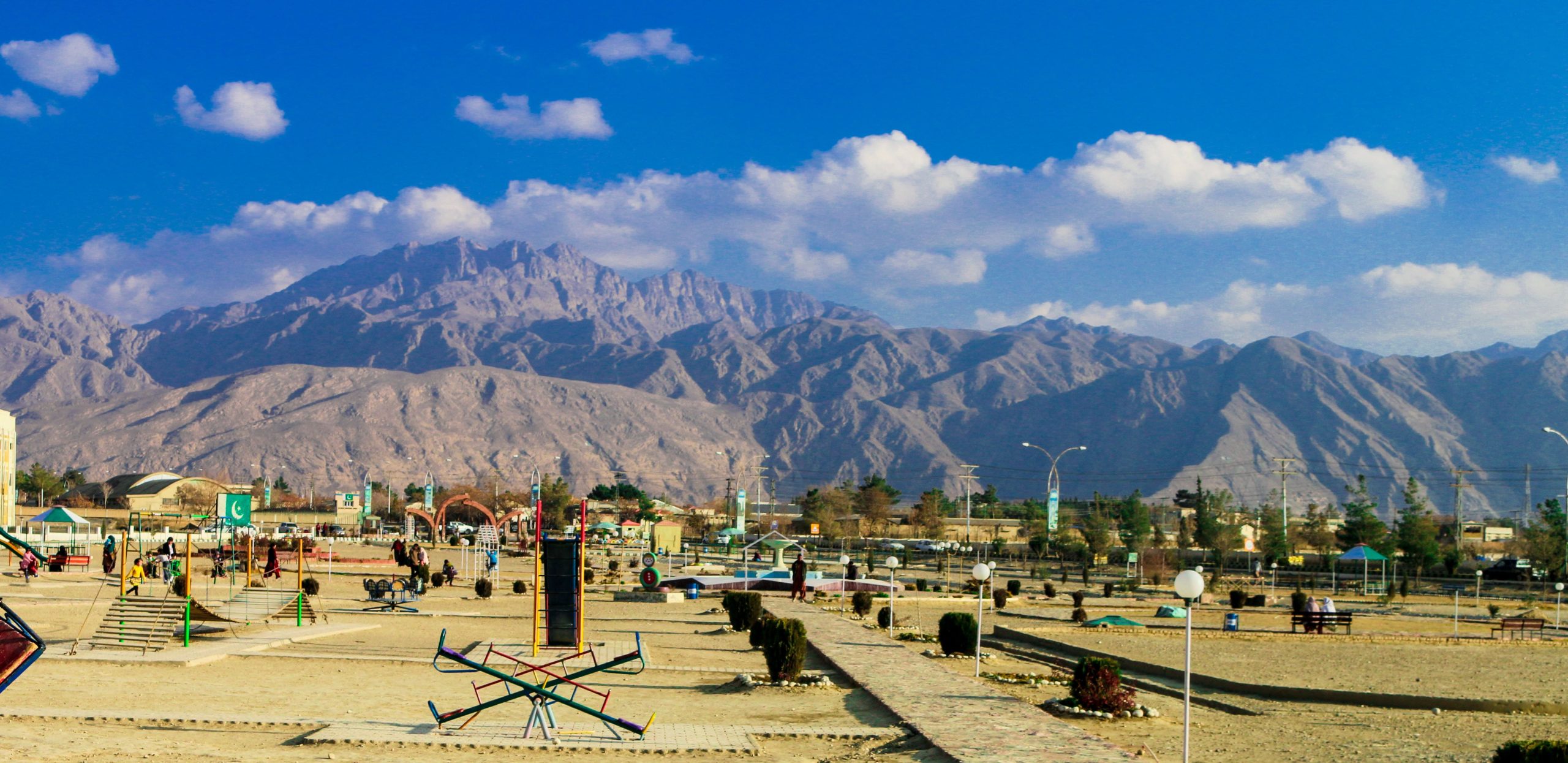
- April 13, 2025
Introduction
Shimshal Valley is one of Pakistan’s most remote and breathtaking destinations, nestled deep in the Hunza region of Gilgit-Baltistan. Known as the “Valley of Glaciers,” this stunning place offers a rare blend of untouched natural beauty, adventurous trails, alpine meadows, and rich Wakhi culture. It is a haven for trekkers, mountaineers, and travelers seeking solitude and raw wilderness.
History
Shimshal’s history traces back centuries, inhabited primarily by the Wakhi people. Historically isolated, the valley had no road access until the year 2003, when a jeep track was carved into the mountains, connecting it to Passu. This isolation helped preserve its unique culture, dialect, and eco-system. The residents are known for producing some of Pakistan’s most elite mountaineers, including Samina Baig, the first Pakistani woman to climb Mount Everest.
Best Time to Visit Shimshal Valley
The ideal time to travel to Shimshal Valley is between May and September. During these months, the weather is pleasant, glaciers are accessible, meadows are in full bloom, and most trekking routes are open. Winters are extremely harsh and not recommended for general tourism.
How to Reach Shimshal Valley from Islamabad
- Islamabad to Gilgit (by air or road):
- By Air: 1.5-hour flight to Gilgit Airport (weather dependent).
- By Road: 16-18 hours via Naran or Besham route.
- Gilgit to Hunza (Aliabad or Passu): 3–4 hours by van, car or bike.
- Passu to Shimshal (by jeep or bike):
- Distance: 53 km
- Time: Approx. 3–4 hours
- The road is narrow and dangerous, suitable for experienced drivers or bikers.
Top Places to Visit in Shimshal Valley
Shimshal Village
A traditional Wakhi village known for its stone houses, hospitality, and mountaineering legends.
- Location: Gojal Tehsil, Hunza District, Gilgit-Baltistan. Closest city: Passu.
- How to Reach: From Islamabad, reach Passu then jeep/bike to Shimshal.
- Places to Visit: Traditional Wakhi homes, Guesthouses, Community School
- Key Attractions: Local hospitality, stone architecture, cultural immersion
- Best Time to Visit: May to September
- Activities to Do: Cultural tours, homestays, photography
Shimshal Lake (Shuwart Lake)
A surreal alpine lake located at 4,735m, surrounded by grazing yaks and snowy peaks.
- Location: Near Shuwart Meadows, upper Shimshal
- How to Reach: 2-3 days trek from Shimshal Village
- Places to Visit: Shuwart Lake, surrounding peaks, herders’ camps
- Key Attractions: Crystal-clear lake, yak pastures, serene wilderness
- Best Time to Visit: June to August
- Activities to Do: Camping, photography, trekking
Shuwart Meadows
Alpine grazing pastures used by locals during summer, offering panoramic views.
- Location: Upper Shimshal region
- How to Reach: 2-day trek from Shimshal Village
- Places to Visit: Shepherd huts, wildflowers, birdwatching points
- Key Attractions: Wildflowers, shepherd life, open skies
- Best Time to Visit: June and July
- Activities to Do: Nature walks, camping, photography
Minglik Sar Base Camp
Base camp of Minglik Sar (6,050 m), a training peak for climbers.
- Location: Above Shimshal Valley
- How to Reach: Trek from Shuwart Meadows (2-3 days)
- Places to Visit: Base camp, surrounding peaks, snowfields
- Key Attractions: Mountaineering practice, stunning scenery
- Best Time to Visit: July to September
- Activities to Do: Base camp trekking, adventure photography
Yazghil Glacier
One of the largest and most scenic glaciers in the region.
- Location: Near Shimshal Village
- How to Reach: 2-hour hike from the village
- Places to Visit: Glacier front, moraines, ice ridges
- Key Attractions: Ice formations, pristine environment
- Best Time to Visit: May to August
- Activities to Do: Hiking, glacier walks
Lupghar Sar Base Camp
Remote base camp for one of the tallest unclimbed peaks.
- Location: Lupghar Valley, Shimshal
- How to Reach: Multi-day trek from Shimshal Village
- Places to Visit: Glacier basins, untouched ridgelines
- Key Attractions: Isolation, alpine adventure
- Best Time to Visit: July and August
- Activities to Do: High-altitude trekking, camping
Zarthgurben (Shimshal White Horn)
A striking white rock formation with spiritual and aesthetic value.
- Location: Near Shimshal Village
- How to Reach: Short hike from the village
- Places to Visit: Base of White Horn, nearby viewpoints
- Key Attractions: Unique geological features
- Best Time to Visit: May to September
- Activities to Do: Rock climbing, photography
Ghunjerab River Valley Viewpoints
Breathtaking lookouts over the river canyon and mountain ranges.
- Location: Along the Shimshal road
- How to Reach: En route from Passu to Shimshal
- Places to Visit: Roadside viewpoints
- Key Attractions: Vantage points, dramatic cliffs
- Best Time to Visit: May to September
- Activities to Do: Photography, sightseeing
Shimshal Pass
Historic pass linking Pakistan with China through mountain trails.
- Location: Northeast of Shimshal
- How to Reach: 4-day trek from Shimshal Village
- Places to Visit: Shimshal Braldu river, herder camps
- Key Attractions: High-altitude vistas, trekking route
- Best Time to Visit: July to September
- Activities to Do: Trekking, adventure camping
Local Cultural Museum
Showcasing Wakhi heritage, tools, clothing, and mountaineering gear.
- Location: Shimshal Village
- How to Reach: Walkable inside the village
- Places to Visit: Exhibits, guided tours
- Key Attractions: History, culture, community stories
- Best Time to Visit: Year-round
- Activities to Do: Museum tours, learning local history
Glaciers to Visit
- Yazghil Glacier
- Malangudi Glacier
- Khurdopin Glacier
- Virjerav Glacier
- Ganj-i-Sar Glacier
7-Day Itinerary to Shimshal Valley from Islamabad
Islamabad to Chilas via Naran/Besham – Day 1
- Route Options:
- Summer (May–Oct): Islamabad > Mansehra > Naran > Babusar Top > Chilas
- Winter (Nov–Apr): Islamabad > Mansehra > Besham > Dassu > Chilas
- Distance: Approx. 460 km
- Travel Time: 12–14 hours depending on route and road conditions
- Activities:
- Scenic stopovers at Lulusar Lake and Babusar Top (if open)
- River and valley views along Indus River
- Overnight Stay: Hotel in Chilas
- Pro Tip: Start early to avoid night travel on mountain roads
Chilas to Passu via Hunza Valley – Day 2
- Route: Chilas > Jaglot > Gilgit > Aliabad > Passu
- Distance: Approx. 280 km
- Travel Time: 8–10 hours
- Activities:
- Rakaposhi View Point
- Altit & Baltit Forts in Hunza (if time allows)
- Photo stop at Passu Cones and Attabad Lake
- Overnight Stay: Guesthouse or hotel in Passu or Gulmit
- Highlight: The dramatic beauty of Passu is unmatched
Passu to Shimshal Village via Shimshal Road – Day 3
- Route: Passu > Shimshal Link Road > Shimshal Valley
- Distance: 50 km
- Travel Time: 3–5 hours (only 4×4 jeeps allowed)
- Activities:
- Thrilling jeep journey with views of narrow gorges
- Arrival and welcome in Shimshal Village
- Walkthrough traditional Wakhi houses and terraced fields
- Overnight Stay: Local homestay or community lodge
- Highlight: True off-the-grid adventure begins here!
Shimshal Village Exploration & Cultural Immersion – Day 4
- Activities:
- Visit the Shimshal Local Cultural Museum
- Talk to elders and understand Shimshali traditions
- Hike to nearby Ghunjerab River Valley Viewpoints
- Enjoy traditional Wakhi dishes like Diram Phitti and Shulbuth
- Optional: Attend local music night or storytelling session
- Overnight Stay: Same homestay in Shimshal
- Tip: Bring small gifts or learning materials for local children
Yazghil Glacier & Minglik Sar Base Camp (Short Hike Option) – Day 5
- Morning Activity:
- Jeep or horse trek to Yazghil Glacier – a breathtaking site surrounded by peaks
- Afternoon Option:
- Hike or ride toward Minglik Sar Base Camp (for seasoned trekkers)
- Great for photography and high-altitude experience
- Overnight Stay: Optional wild camp or return to Shimshal
- Caution: Altitude can be intense—keep hydrated
Trek to Shuwart Meadows & Shimshal Lake – Day 6
- Full Day Activity:
- Begin trek early to Shuwart Meadows
- Reach Shimshal Lake (Shuwart Lake)—serene, surrounded by flowers and mountains
- Meet Wakhi herders with yaks and goats
- Rest, photography, or brief spiritual reflection
- Return to Shimshal: Trek back by evening (or camp at the lake if with a guide)
- Overnight Stay: Homestay or tent (based on plan)
- Pro Tip: Pack high-energy snacks and wear sturdy boots
Return to Passu and Travel Toward Gilgit/Islamabad – Day 7
- Morning: Depart early from Shimshal by jeep
- Route: Shimshal > Passu > Gilgit
- Stopovers:
- Quick stop at Lupghar Sar Viewpoint
- Optional lunch in Hunza
- Evening Options:
- Stay in Gilgit or Chilas depending on fatigue and next-day plan
- End of Journey:
- Can continue to Islamabad next day or extend trip to Fairy Meadows/Naltar
- Tip: Check weather forecasts and road status in advance
Where to Stay in Shimshal
- Guest Houses: Local family-run guesthouses in the village
- Camping: Possible at meadows, lakes, and base camps
- Homestays: Wakhi households offer basic yet warm hospitality
Emergency Contacts & Health Precautions
- Nearest Hospital: Aliabad, Hunza (approx. 6-8 hours away)
- Basic Health Unit: Available in Shimshal Village
- Emergency Services: 1122 (Pakistan emergency helpline)
- Health Tips: Acclimatize gradually, carry altitude sickness meds, stay hydrated
Travel Tips for Shimshal Valley
- Only experienced bikers should attempt the Shimshal road
- Always carry snacks, warm gear, and a water purifier
- Hire a local guide for treks and cultural insights
- Avoid littering and respect local traditions
- Electricity is limited; bring power banks/solar chargers
FAQs
What is the best time to visit Shimshal Valley?
The best time to visit Shimshal Valley is from May to October, when the weather is pleasant, the roads are accessible, and trekking trails are open. However, if you wish to avoid crowds and explore in solitude, early May and late September are ideal.
How can I reach Shimshal Valley from Islamabad on a bike?
To reach Shimshal Valley from Islamabad on a bike, you must travel through Naran or Besham to reach Chilas, then continue to Passu via Gilgit and Hunza. From Passu, a jeep track leads to Shimshal, which is only accessible via 4×4. Therefore, you can ship your bike on a jeep or arrange local transport for this stretch.
Is Shimshal Valley safe for solo travelers?
Yes, Shimshal Valley is considered safe for solo travelers, especially those with prior experience in mountain travel. Moreover, the local Wakhi community is extremely hospitable and welcoming. Still, it’s wise to inform local authorities or hosts of your plans when heading out on hikes.
Are there any mobile networks working in Shimshal Valley?
Surprisingly, mobile network coverage is very limited in Shimshal Valley. Telenor and SCOM may provide weak signals in some areas, but you should not rely on consistent connectivity. In addition, having offline maps and informing someone of your itinerary is recommended.
Can I visit Shimshal Lake without a guide?
Although it’s possible to trek to Shimshal Lake independently if you’re experienced, it’s highly recommended to hire a local guide. The terrain can be confusing and remote, and having a guide ensures safety, cultural insights, and navigation support.
What are the top trekking destinations in Shimshal Valley?
The top trekking destinations in Shimshal Valley include Shuwart Lake, Yazghil Glacier, Minglik Sar Base Camp, and Shimshal Pass. These routes offer breathtaking views and high-altitude adventure, but proper planning and fitness are essential.
Is a permit required to enter Shimshal Valley?
No special permit is required for domestic travelers to enter Shimshal Valley. However, foreign tourists must register with local authorities in Gilgit or Hunza. Furthermore, it’s wise to carry identification and vehicle documents at all times.
How many days are enough for a Shimshal Valley trip?
Ideally, you need 6 to 7 days for a well-rounded trip to Shimshal Valley, including travel time from Islamabad, exploration, and rest days. Moreover, trekkers may need additional days for acclimatization and extended routes.
What kind of accommodation is available in Shimshal Valley?
Accommodation in Shimshal Valley includes local homestays, guesthouses, and basic campsites. Though not luxurious, they offer authentic experiences with traditional meals and warm hospitality. In addition, booking through local contacts helps support community-based tourism.
What should I pack for a trip to Shimshal Valley?
You should pack warm layers, trekking shoes, a first-aid kit, snacks, power bank, and sun protection. In addition, carrying essentials like a flashlight, reusable water bottle, and high-energy bars can enhance your comfort during hikes.
Is there snowfall in Shimshal Valley?
Yes, Shimshal Valley receives heavy snowfall in winter, especially from November to March. However, access becomes nearly impossible due to snow-blocked roads, making summer the more viable season for travelers.
Can I take my own car or SUV to Shimshal Valley?
You can drive up to Passu in your own car or SUV, but beyond that, only 4×4 jeeps are suitable for the rugged Shimshal Road. Moreover, hiring a local driver familiar with the terrain is the safest option.
Are there any ATMs or banking facilities in Shimshal Valley?
No, there are no ATMs or banking services in Shimshal Valley. Therefore, it’s important to carry enough cash from Hunza or Gilgit for all expenses. Credit cards are not accepted in remote areas.
What is unique about Shimshal Valley culture?
Shimshal Valley is home to the Wakhi community, known for their rich oral traditions, music, and mountain wisdom. In addition, their sustainable lifestyle and respect for nature make it a cultural experience like no other.
Are children allowed on treks in Shimshal Valley?
Yes, but it depends on the age and physical stamina of the children. While shorter hikes like Yazghil Glacier are manageable, longer treks like Shimshal Pass or Shuwart Meadows may not be suitable for young kids.
What is the elevation of Shimshal Valley?
Shimshal Valley is situated at an elevation of 3,100 meters (10,200 feet) above sea level. Therefore, travelers should acclimatize gradually and stay hydrated to avoid altitude sickness.
Are there any local festivals in Shimshal Valley?
Yes, local Wakhi festivals like Tagham (a spring festival) and Khumar-e-Buzurg are celebrated with traditional songs, dances, and feasts. Moreover, visitors during festival time are warmly welcomed to join the celebrations.
Can I travel to Shimshal Valley during monsoon?
Traveling to Shimshal Valley during monsoon (July-August) is not advisable due to landslides and road blockages. However, if you must, keep buffer days and check weather updates closely.
Do locals speak and understand Urdu or English?
While Wakhi is the primary language in Shimshal Valley, most people also understand Urdu, and some youth can speak basic English, especially those involved in tourism or education.
How can I contribute to sustainable tourism in Shimshal Valley?
You can contribute by staying in local homestays, hiring local guides, avoiding plastic waste, and respecting cultural norms. In addition, shopping for local crafts helps support the community directly.
Conclusion
Shimshal Valley is not just another travel destination—it’s an unforgettable journey into Pakistan’s last frontier. For those who seek high-altitude adventure, deep culture, and soul-soothing solitude, this valley offers it all. Whether it’s the turquoise lake of Shuwart, the vast glaciers, or the unmatched warmth of the Wakhi people—travel to Shimshal Valley will remain etched in your memory forever.






